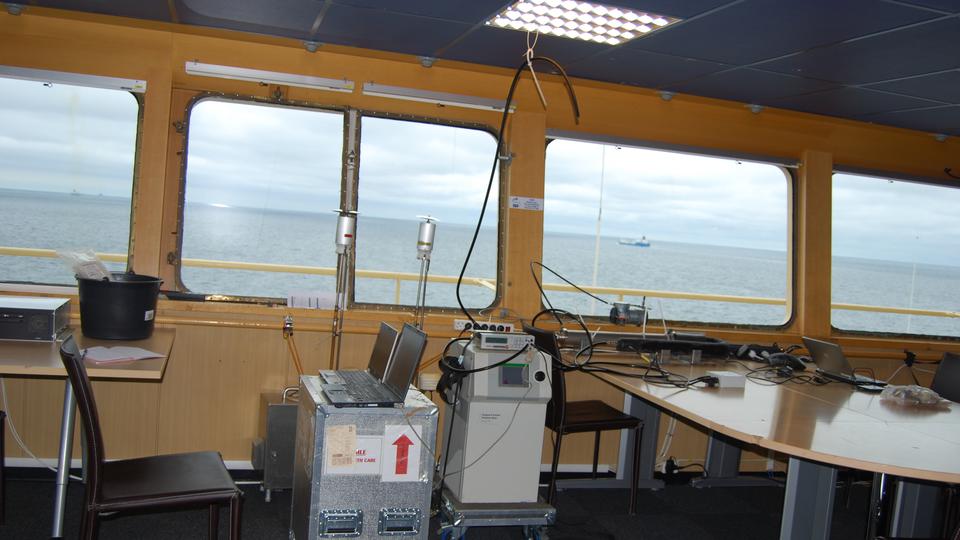
Dust and particles
Dust is air pollutants in the form of solid particles. Many of the particles we breathe in can affect our health, for example by irritating the nose, throat and airways and aggravating asthma. Particles containing allergenic substances can cause sensitisation or allergies. The risk of adverse health effects depends on the particle size, the concentration of particles, their chemical composition and the time of exposure.
Dust and particles in the workplace
Dust is a generic term for very small solid particles found in the air and deposited as a layer on floors, furniture and other indoor surfaces. Dust can be made up of many different types of material. Some particles are of natural origin, while others are released by various heating and combustion processes.
Airborne particles are classified according to their size. The size fractions relevant to health are the inhalable, thoracic and respirable fractions (EN 481):
- The inhalable fraction is the fraction of particles inhaled through the nose and mouth.
- The thoracic fraction is the fraction of inhalable particles that pass through the larynx.
- The respirable fraction is the inhalable particles that reach the lower part of the respiratory tract, the alveoli (air sacs) of the lungs.
Because particles can have different shapes, the aerodynamic diameter is often used to express the size of airborne particles. The term particulate matteris abbreviated as PM. PM10 indicates the mass concentration of airborne particles smaller than 10 micrometres (µm) and PM2.5 the mass concentration of airborne particles smaller than 2.5 µm. Compared to the limit values for the working environment, the PM10 size fraction is between inhalable and respirable fractions, and PM2.5 is smaller than respirable dust.
Very small particles in the size range of 1-100 nanometres (nm) are called nanoparticles. In the past, ultrafine particles were a common term in occupational hygiene and medicine. Because nanoparticles are so small, their mass represents only a small fraction of the mass concentration of PM10 and PM2.5. Therefore, other methods are needed to measure nanoparticles, which, in simple terms, involve sorting the particles by size and then calculating the number of particles in each size range as the number of particles per cubic centimetre.
Where does it occur on board?
Particles are generated by combustion and are present in exhaust gases and welding fumes. Dust can also be released when handling powdered chemicals and during metal processing operations such as turning, drilling and grinding. Smoke particles from welding, for example, are generally smaller than 1 μm, which means that all smoke particles can be considered respirable. Studies have shown that the main source of particles in the indoor air of ships is exhaust gases in the supply air.
Health effects
Particulate matter is considered to be the air pollutant with the greatest impact on human health. Several lung diseases are caused by particles that cause inflammation in different parts of the lungs, such as emphysema, chronic obstructive pulmonary disease (COPD), asthma and heart attacks. Particles can also carry carcinogens and other harmful substances. Particles containing hazardous substances that are released and carried around the body in the blood can also cause other diseases specific to that particular substance. There are also several types of cancer caused by dust and smoke, the most common being lung cancer.
OEL values and guidelines
In the context of occupational health and safety, limit values for dust are set for individual chemical substances, mainly metals, or for specific manufacturing processes, such as cotton, graphite, thermosetting plastics, coal, flour, paper, PVC, textiles or wood. In addition, limits are set for total dust depending on its chemical nature, whether it is inorganic or organic. If the dust consists of substances that have specific limit values, these values should apply.
For particles in outdoor air, there are binding limit values for PM10 and PM2.5. The WHO guidelines (WHO, 2021) also use PM10 and PM2.5. as a metric for size. IARC has classified outdoor particulate matter as a human carcinogen. If the dust consists of substances that have specific limit values, these values should apply.
IARC risk group | TLV-TWA (8h) | TLV-STEL | WHO guidelines for indoor air quality | Indoor environments (homes, offices) | |
Inorganic dust, respirable | --- | 2.5 mg/m3 | --- | --- | Not applicable |
Inorganic dust, inhalable | --- | 5 mg/m3 | --- | --- | Not applicable |
Organic dust, inhalable | --- | 5 mg/m3 | --- | --- | Not applicable |
PM10 | 1 | Not specified | Not specified | 15 µg/m3 5 µg/m3 | 2 – 330 µg/m3 |
PM2,5 | 1 | Not specified | Not specified | 45 µg/m3 15 µg/m3 | 2 – 210 µg/m3 |
When the dust consists of chemical substances that have specific limit values, these respective values should be applied.
Soot and elemental carbon
Elemental carbon (EC), or soot, is a type of particulate matter produced by almost all types of combustion. In the literature it is also referred to as black carbon.
Where does it occur on board?
Elemental carbon is a component of PM2.5 particles, which are mainly produced by incomplete combustion of fossil fuels and biofuels. It is considered a reliable measure of combustion-related particles resulting from incomplete combustion of fossil fuels and biofuels.
Health effects
The health effects are similar to those of exposure to dust and particles, including reduced lung function and cardiovascular disease.
OEL values and guidelines
Elemental carbon is a proxy for exposure to diesel exhaust. The OEL value for elemental carbon is 50 µg/m3.
IARC risk group | TLV-TWA (8h) | TLV-STEL | WHO guidelines for indoor air quality | Indoor environments (homes, offices) | |
Elemental carbon | --- | 50 µg/m3 | Not specified | Not | 0.5 – 7 µg/m3 |

